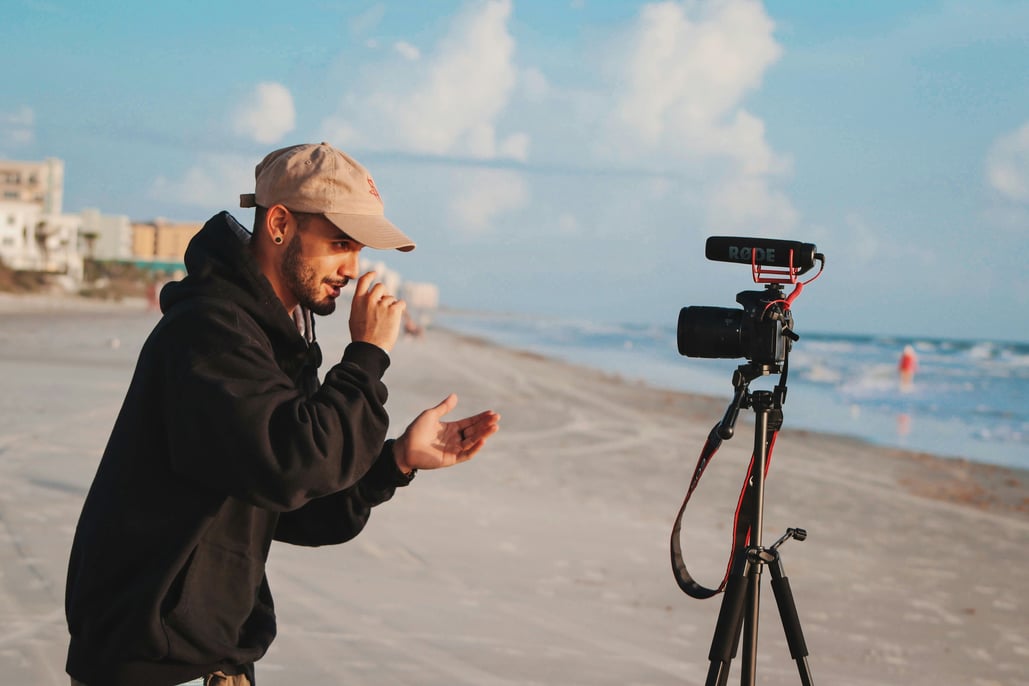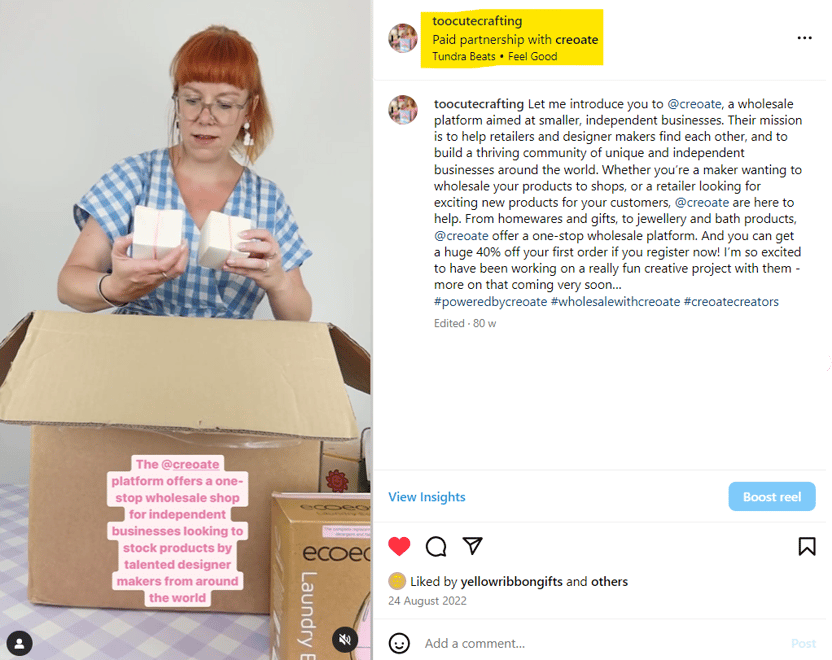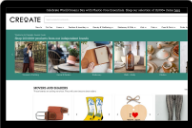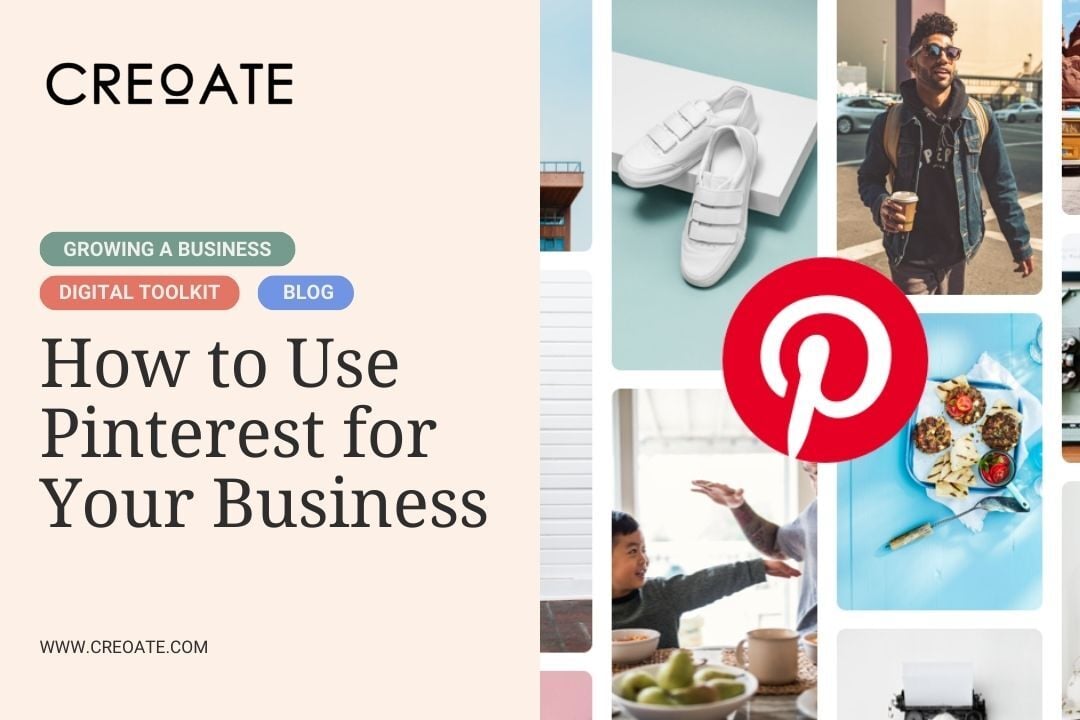
Collaborations and influencer partnerships can be powerful catalysts for expanding your reach and building credibility on social media. The popularity of influencer marketing on Instagram in particular is booming at such a pace that according to Statista, the global market is expected to grow from 13.8 billion U.S. dollars in 2021, to nearly twice that amount by 2025. In 2021, the number of brand-sponsored influencer posts on the social platform reached 3.8 million. By 2029, advertisers are expected to spend more than $69 billion a year to have their goods and services promoted by influencers.
Instagram’s global user base is in the vicinity of 1.28 billion and counting, which translates to a large potential audience that can be easily reached via organic ads or influencers. The latter command a great deal of trust from their followers, and their recommendations are often considered more reliable. By tapping into influencer marketing, you can reach established audiences while diversifying your content, and showcasing your products to new and prospective customers.
Here's how to leverage collaborations and influencer partnerships effectively, as well as how to decide if and which kind of brand partnerships are right for your business.
Identify the right partners
Choose collaborators and influencers whose audience aligns with your brand. Look for those whose values, niche, and engagement levels resonate with your target audience. From there, establish clear goals based on what you think they can offer your brand, and what you'd like to prioritise and achieve through the use of influencer marketing and collaborations. Below are some examples of goals you might use to guide your collaboration:
- Increase brand awareness
- Drive sales
- Generate user-generated content
- Grow following
- Increase engagement
Outreach and communication
Reach out to potential collaborators or influencers with a well-crafted pitch. Clearly articulate the benefits of the collaboration, including compensation or whether the partnership would be on a gifted basis, and what you hope to achieve together through your partnership.
It's important to maintain open and honest communication throughout the process, and ideally plan in time to see that your content ideas align with both your brand’s identity, the creator’s audience and style, as well as your respective timelines. Go into discussions with an idea of the kind of content format that would best suit your objectives. It's no secret that video content is what dominates most social media platforms these days. 161.4 million people watched live video content in 2023, and figures are expected to rise year-on-year. It's easy to want to jump on the bandwagon, but be realistic about which content format might work best for your specific goals.
Crucially, you want to ensure that the content feels authentic and natural to the influencer's audience. It’s important to allow influencers plenty of creative freedom within your brand guidelines when it comes to content creation, since they know their audience best. Their unique perspective can make the content more relatable and engaging, and breathe new life into your brand image. As full-time content creators, this is what they do best and you're trusting their expertise. However, be present and engaged with their ideas and process and maintain open communication, this is a collaborative partnership, after all.
Disclosure and transparency

Compliance with advertising regulations is essential. Influencers should clearly disclose their relationship with your brand in their sponsored posts and stories. Regulation differs from country to country, so be sure you’re familiar with what’s required for both the country your brand is based in, as well as that of the influencer you’re working with to make sure everything is compliant.
As far as influencer marketing regulations in the UK, clear information can be found on the government website here. However, important points to remember are that influencers must clearly disclose to their audience whether the content they're posting promoting products or services is gifted, or a paid advertisement using labels such as the following:
- Ad
- Advert
- Advert
- AD
- Advertising
- Advertisement
- Gifted
As well as these, it's now also possible to make paid content known through Instagram's 'collaboration' or 'branded content' features when publishing a post, which allows brands and content creators to publish collaborative content simultaneously to both profiles to better capitalise on the attention of both audiences. Failure to do this, or to make a collaboration known on the part of the content creator could result in serious legal action and fines for both the influencer in question, and for your brand. Be sure to go over these guidelines when you begin your collaboration, and outline this clearly in your working contract or agreement.
Co-branded campaigns
Consider co-branded campaigns where both parties contribute to promotions. This can include joint giveaways, challenges, live events and interviews, demonstrations and more. Having both your brand and an influencer's audience's eyeballs on your content is a sure-fire way to increase engagement and interactions. Consider how this can serve your predetermined goals.
For example, if you're a brand that sells massage products, partnering with a well-known licensed massage therapist, therapy organisation, or expert in the field can be a great way of adding a level of credibility to your product line, helping to build trust with your target audience and customers through social media.
Track and measure

Use tracking links, affiliate codes, or specific campaign hashtags to measure the success of collaborations. Not only will this help you determine whether the influencer and their audience are the right fit for your brand, but it can help you analyse metrics to understand the impact on your goals.
This way you can adjust your campaign and strategy to better suit your objectives. Perhaps this might look like pursuing similar influencers, or changing tack completely.
When analysing the results of campaigns, make sure you consider long-term impact on your brand and reputation, as well as immediate results post-launch. Take into account ROI per collaboration when considering these to determine whether further partnerships might benefit your brand.
Long-term relationships
Building long-term relationships with influencers can lead to consistent and authentic advocacy for your brand, and potentially ongoing collaborations for more integrated content.
When doing so, be sure that all parties are clear on expectations, long-term compensation, as well as outlining content ownership and the duration of your collaboration. Influencers may also want to know if you plan to use collaborative content in further initiatives such as paid advertising on Facebook or Instagram, and if so, what percentage of generated earnings they can expect to receive.
Micro-influencers
Don't underestimate the power of micro-influencers with smaller but more concentrated and highly engaged audiences. According to Forbes, micro-influencers “boast up to a 60% increased engagement rate compared to macro-influencers.”
“Micro-influencers also have over a 20% higher conversion rate that can help brands boost their e-commerce sales.” Not to be overlooked, there’s inherent value to working with micro-influencers as more budget-friendly sales drivers, capable of adding a more personal and niche touch to collaborations.
Mutually beneficial marketing
Influencer partnerships and collaborations can be a mutually beneficial way to reach new audiences and strengthen your brand's credibility, while diversifying your content output. When executed thoughtfully and authentically, these strategies can amplify your presence and engagement on Facebook and Instagram, while building lasting connections with new and prospective customers.
Not registered with CREOATE yet? Sign up now and sell wholesale with us today.
Related articles:
- Instagram Bio Ideas to Engage your Audience
- 20 Easy Instagram Content Ideas for Businesses
- 6 Small Business Instagram Tips








